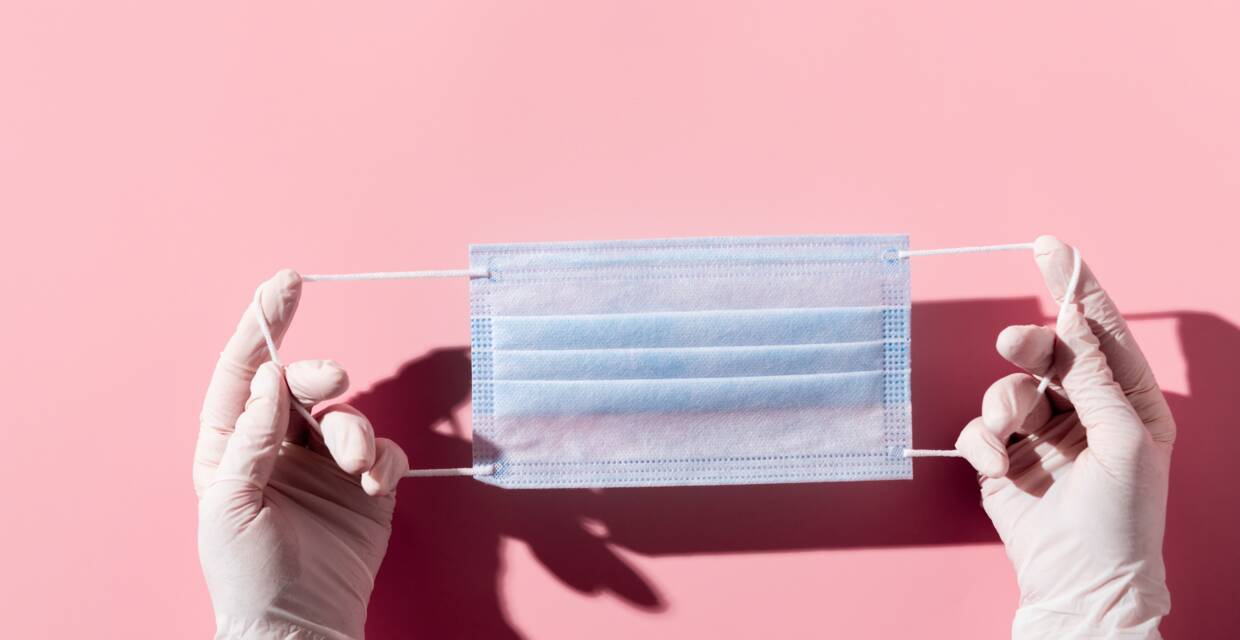The Case for Contactless

.png)
.png)
.png)
.png)
.png)
8 Best Practices to Excel in Contactless Patient Experiences
During a recent webinar, Melissa Bauman (SVP, Telemedicine, Urgent Care for Kids) and Dr. Jeannie Kenkare (CMO, PhysicianOne Urgent Care) shared actionable insight for clinic operators to boost consumer confidence, optimize the patient journey, streamline operations, leverage patient feedback, and embrace change in order to master contactless patient experiences for both in-person and virtual care.
1. Acknowledge the impact of COVID-19 on the doctor-patient dynamic.
People are relying heavily on professionals to help them navigate the COVID-19 pandemic, which in some ways creates a more intimate provider-patient relationship. Regardless of the care setting — inside an urgent care center, carside in a center’s parking lot, or on a virtual visit — providers and patients are immediately establishing a very strong provider-patient connection based on the concerns and angst that surround the pandemic. As a result, providers are experiencing a greater need for empathy toward patients coming to them with fear and searching for information. Providers are creating space during visits to pause and listen and respond to patients’ concerns and anxieties, prompting a shift in their approach to both telemedicine and in-person care.
2. Ensure patients know they are safe receiving care in your clinic.
Amidst heightened cleaning and sanitation efforts, urgent care clinics have likely never been cleaner than they are today, and while providers and staff may see first-hand that their site is sterile and safe for patients, ensuring patients are confident in seeking in-person care requires more concerted effort. For example, it’s one thing to have a really clean clinic, but it’s entirely different to have a patient see you cleaning the clinic. It’s one thing to have your staff know that your clinic is a safe place to be, and it’s another to have a sign up on the wall explaining how it’s safe. And taking it one step further, it’s one thing to have a sign but entirely different to equip staff with the knowledge of safety measures to verbally communicate them to patients.
Today, patient knowledge is patient confidence. Whether via clinic websites, text messages, signage, or in conversation, it’s important to let patients know that they have options to seek care however they’re most comfortable and that all efforts are being made to ensure their well-being. In an in-person setting, visual cues like masks, hand sanitizer, reminders for social distancing and personal hygiene make both the efforts and expectations for safety very clear. Patients are looking to the medical community to set the example for everyone to play their part.
3. Prioritize the patient experience from scheduling to check-in.
Creating a fully contactless patient experience can begin with this simple question: How can technology be leveraged to replace paper and pen? Before COVID-19, Dr. Jeannie Kenkare, CMO of PhysicianOne Urgent Care, says their centers registered patients with a clipboard, paper forms, a pen, and a physical signature. But that process has completely changed. Now, PhysicianOne offers online appointment registration for patients to complete directly from their computer or mobile device — from signing privacy policies to insurance and photo ID upload to payment collection. To further reduce in-person wait times, practices can manage the time patients arrive, direct them to wait in their cars, and escort them directly to an exam room when ready. For walk-in patients, signage can direct patients to their next right steps and prompt them to call a registrar to be guided through their own digital registration right from their car in the parking lot.
4. Adapt workflows to support a completely contactless patient experience.
Once a patient is checked in and waiting in their car, they receive a call that an exam room is ready and are met at the front door by a medical assistant who escorts them to an exam room and begins evaluation. PhysicianOne centers have designated two different exam room types — one for patients exhibiting COVID-19 symptoms and one for non-symptomatic patients seeking normal care. In some symptomatic cases, exams may be conducted over the phone with a patient using their own device from an exam room or their car to communicate with a provider. For symptomatic patients or those who have simply elected to stay in their car, a lot of the initial evaluation is done over the phone, and then a provider will perform testing and exams carside. Telemedicine, on the other hand, has always been contactless. At Urgent Care for Kids, Melissa Bauman, SVP of telemedicine, says their focus has shifted to adapting workflows for COVID-19 screening and triage to deliver a seamless process for patients who are sent to a clinic. Changing the entire patient experience was not something anyone imagined, but it has given patients the opportunity to be more in control of their visits.
5. How has technology aided the transition to a contactless experience?/Leverage technology in the transition to a contactless experience.
Surprisingly, some clinics have moved away from certain technology to adopt a more mobile experience. For example, Urgent Care for Kids abandoned tablets and kiosks in favor of digital check-in from patients’ personal devices. A cohesive end-to-end patient engagement platform that can manage the entire clinic workflow is key to successfully implementing a contactless experience, as well as a technology partner that is agile and can adapt to clinics’ evolving needs and pain points.
6. Create a constant feedback loop to maintain high patient ratings.
Consumer centricity is the future of healthcare, and positive patient relationships will get clinics through the other side of the pandemic. Patient feedback is extremely valuable, but if you’re not asking for it, then you’re never going to get it. Maintaining an open channel with patients gives insight into their perception of the visit and the overall patient experience. Accepting and responding to feedback starts with acknowledging that no clinic is perfect or has everything figured out. Creating a process to better understand the patient experience is what one might call an empathy workflow.
Healthcare is currently reimagining what it means to provide a good patient experience. Doctors in full PPE providing curbside care are finding it tougher to connect with patients, and technology has historically proved more challenging too. But those barriers can be overcome by listening and taking alternate approaches to sharing information with patients. At Urgent Care for Kids, this means using signage that’s friendly and inviting. The pediatric clinic incorporated their duck mascot into the designs for staff masks and floor stickers — simple steps that support a positive patient experience in a new way.
7. Don’t stop evolving your contactless experience.
Every day since COVID-19 hit has been a constant evolution calling for constant learning. As virtual medicine continues to become a larger portion of urgent care business, clinics must maximize virtual offerings to further eliminate the challenges patients face in receiving care, including people who are not tech-savvy or have little to no access to technology. Call centers are also valuable in the contactless experience to ensure patients have a way to connect that is not online. An encouraging voice on the other end of the phone can help patients get the care they need and prevent them from completely disengaging.
As summer comes to end, some of the ways care has been delivered in response to COVID-19 will also have to be re-evaluated. With colder weather coming, delivering carside care is going to become less than ideal at best, so Dr. Kenkare and other leaders at PhysicianOne are thinking through plans to safely move care delivery back inside, taking measures to install air purifiers and plexiglass barriers. The challenges of COVID-19 will only be compounded by flu season and will also force practices to change the way they think about what they offer patients.
8. Lean on experts if you’re struggling to adapt.
The best way to eat an elephant is one bite at a time. For operators who are struggling to adapt to contactless patient experiences, listening to frontline staff is key to getting started. Make sure staff feel safe and comfortable because they’re the ones interacting with patients everyday, and when staff are taken care of, patients are taken care. Beyond supporting staff, find technology partners and other leaders who are willing to be agile and who you can lean on as you implement and optimize contactless workflows.
Watch the full webinar to learn even more about efforts at Urgent Care for Kids and PhysicianOne Urgent Care to optimize the contactless patient experience for in-person and virtual care.



